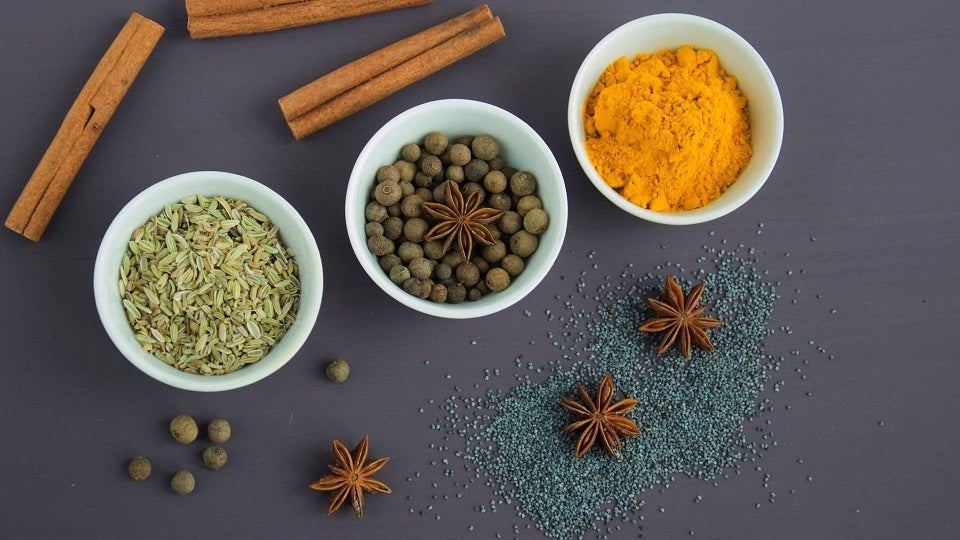
Apr 11 , 2020
Is your food adulterated? Let’s find out..
Is it Cumin or grass seeds?
Grass seeds, sawdust, rice bran are mixed with Cumin seeds. How can we find this?
Including Cumin in our day to day food, provides numerous health benefits. Cumin has the ability to induce digestion and increases hunger. Jeera water helps to reduce indigestion caused by non-vegetarian and heavy foods.
Cumin adulteration is done with grass seeds, sawdust, rice bran and are colored with coal powder.
How to test adulterated cumin?
- Drop a teaspoon of cumin seeds in the water, the real cumin will go under the water. Sawdust, rice bran, grass seeds will float on top of the water.
- Take a teaspoon of cumin seeds on your palm, rub and crush them with the help of your thumb. If you see a black shade sticking to your palm, then it is adulterated cumin seeds.
Asafetida or Plain Flour? What are we using in our dishes?
Hing / Asafetida is not only used as an ingredient in our day to day dishes but also used as a home remedy.
Asafetida is added to the diet for a unique flavor, aroma and is also useful in treating gastric problems. Hing is imported from Iran and Afghanistan. Due to its high cost, Hing is adultered with tree gum, stones, asafetida waste, dye and maida/plain flour.
So it is better to check the asafetida bought from the shop before using it. It can be done with simple tests.
Adulteration test for Asafetida :
- Take a teaspoon of asafetida and put it on fire. Unadulterated Hing will burn like camphor.
- Add a teaspoon of Hing to a glass of water and mix it well. Pure asafetida will dissolve and the water will turn into milky white color. If it is adulterated asafetida, a layer of dust will float and there will also be small lumps seen in the water. If the water is of any other color, other than milky white, it means that it has undergone an adulteration through the dying process.
Pure Wheat flour or Excess Bran?
Wheat flour is mixed with excess wheat bran, chalk powder, starch, tapioca flour, talc to increase the weight and reduce the cost of packet wheat flour.
An increase in diabetic patients, awareness of low glycemic index has increased the need and want of Roti/Chapathi made of Wheat flour. We pick a packet of wheat flour from the store thinking that we are eating healthy food, but we are being cheated with adulterated wheat flour.

Let’s test adulterated Wheat Flour at home..
- Take a transparent glass filled with water and sprinkle a spoonful of wheat flour. The dust particles, bran will float on top of the water and the wheat flour will go to the bottom.
- If wheat flour is adulterated with chalk powder, it needs to be tested with hydrochloric acid which will lead to the effervescence.
- Roti made of adulterated wheat flour will be hard and will be flavorless and will absorb more water.
Chilli powder or Bricks sand?
Spicy Chilli powder is one of the main ingredients of spicy Indian cuisine. But are we using Brick sand with chemicals?
Brick sand and sawdust are mixed with spice and color inducing chemicals to add weight to pure Chilli powder. This can be found with simple tests at home.

During olden days, we used to purchase dried Chili’s and grind it ourselves to make pure Chilli powder. But nowadays due to time constraints and busy life, we pick the Chilli powder packet from stores thinking that it’s pure. But we become the target of the adulteration market.
Adulteration test for Chilli powder:
- Add a teaspoon of Chilli powder to a glass of water. Brick powder and sand will settle down quickly. Check the sedimented layer by rubbing it with your fingers. If it’s rough then it is clearly brick powder and sand.
- Sawdust will float on the water.
- If the water quickly turns into red color, then it proves that the Chilli powdered is adulterated with spice inducing chemicals and dyes such as acetone and rhodamine.

